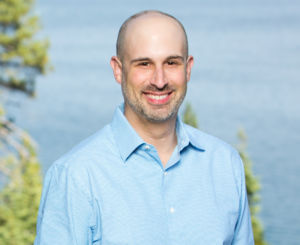How the Best Service-Layer Companies May Turn the Tables on Big Brands
by Lindsay Rowntree on 22nd Aug 2018 in News

There has been much conversation around direct-to-consumer (DTC) brands, and why and how they are causing such disruption to the traditional marketing model and the way they engage with the service layer. Writing exclusively for ExchangeWire, Jay Friedman (pictured below), president and partner, Goodway Group, explains why the big-brand marketers should be taking note and looking to evolve their own marketing practices and service-layer relationships on their journeys to transformation.
The holding companies are struggling to charge for and deliver measurable business results to brands. Meanwhile, consultancies and tech firms are delivering the service layer directly to brands, which means the service layer is getting more attention these days. Additionally, DTC (direct-to-consumer) brands are disrupting established brands with real growth in the market, delivering to customers better buying experiences and more flexible service terms. But there’s another major advantage startup DTC brands have that established brands don’t: new DTC brand CMOs can hire the smartest service-layer company they can find without their CEO asking why they’re not choosing a big, traditional, holding-company agency.
As the old saying goes: “No one ever got fired for choosing IBM.” For decades, a big brand choosing a major holding company agency has been the safest bet around. Sure, they’ll peel off work for smaller firms, but the bulk of the work – the core – is still controlled by one of these agencies. The problem with this classic relationship model is that it rewards a splashy allocation of resources – i.e. big budgets, teams, and premium products – but efficiency and a focus on results gets lost in the process, exposing a key vulnerability for challenger companies to exploit.
So, if the smartest upstart brands are working with the smartest upstart service-layer companies, are we witnessing an advertising 'survival of the fittest', where the upstart, innovative brand-agency partnership models will come out ahead? To evolve and keep their place in the ecosystem, large brands need to do three things differently starting now:
1. Give up the hyper-myopia of 'working media dollars' and pay for real, great, results

Jay Friedman, President & Partner, Goodway Group
Marketers only chase the highest percentage of working media dollars because, historically, they couldn’t effectively measure advertising’s real impact on their business. We can now measure real business impact through intelligent, lift-based testing and as a result have no more guessing at what works, what doesn’t, and why!
Let’s say I buy a USD$300 suitcase and it lasts me 10 years. My friend thinks I’m crazy and won’t spend more than USD$50 on a suitcase, but it lasts only one year. Net present value and time spent buying 10 suitcases aside, marketers must retrain themselves and their procurement departments to buy based on results and not price, and then hold their agencies accountable for achieving them.
2. Adopt any multi-touch attribution model, because they’re all better than last click
Last click is clean and easy. It’s also incredibly inaccurate. Consider this: we worked with a client who was convinced last click wasn’t such a bad idea. So, with both permission and interest from the brand, we set up an experiment to 'win' at last click. The result? We had to bid upward of USD$2,000 CPM on high-value users, i.e. users likely to click on this specific brand, because it’s an incredibly small universe. These hyper-inflated bid amounts are caused by the retargeting and CPC-model companies trying to out-bid each other, but it’s just not a smart use of money!
We were 'successful' in the experiment by beating other vendors and beating the client’s CPA goal, but at the cost of spending wisely. What the client realised was that last click often steals organic conversions to look successful, but gives no credit when programmatic is a part of the conversion process, and this is wrong. The transparency in how last-click vendors win ensured this client quickly moved to a multi-touch model.
3. Break the mould
I’d be surprised if a CMO got to this point in their career because they played it safe. Yet, when deciding to leave a current holding-company relationship, how often does that CMO hire a pitch consultant and simply RFP the other four holding companies? Do they really believe they’re going to get dramatically different results?
Senior marketers at large brands have said to me: “We tend to swallow/overwhelm smaller service companies, so we really need those that can match us in their scale.” But, if the DTC brands are hiring the smartest service-layer companies, no matter how big or small they may be, maybe it’s the brands that need to change how they’re approaching this aspect of their business. Perhaps it’s the brand’s responsibility to ensure they specifically don’t overwhelm the smartest company they can find. And perhaps it’s up to the brand to recognise that the time they invest in building a scalable relationship will likely pay them back many times over.
When senior marketers at large brands say: “We have tremendous spending power” and “Agencies will work with us on our terms”, it might feel momentarily good to do some chest-beating. But, if big-brand marketers want to avoid the continued loss of market share to startup brands, a good place to start transforming is by evolving the traditional advertising model and relationships.
See Jay Friedman on stage at ATS Atlanta in March 2019. Tickets are available now.








Follow ExchangeWire